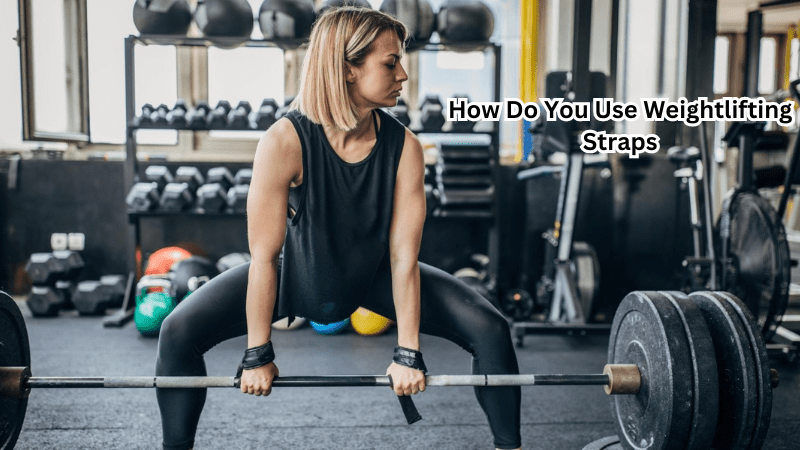Weightlifting straps are valuable for athletes at all levels, providing enhanced grip strength and allowing individuals to lift heavier weights with increased confidence.
These straps are especially beneficial for exercises involving pulling movements, such as deadlifts, rows, and pull-ups, where grip strength can be a limiting factor. By wrapping the straps around the wrist and barbell, lifters can maintain control throughout the lift, reducing the risk of grip fatigue or failure.
Not only do these straps aid in maximizing performance, but they also help in preventing injuries by allowing proper form during challenging lifts. In this article, we will explore how to effectively use weightlifting straps and the benefits they bring to your strength training routine.
What Is the Purpose of Weightlifting Straps?
The primary purpose of weightlifting straps is to help lifters overcome limitations in grip strength, allowing them to focus more on the target muscles rather than struggling to hold onto the weight.
This is particularly useful in high-intensity strength training where the load may exceed the grip capacity of the athlete. By providing a secure attachment between the hands and the bar, straps enable lifters to perform more repetitions and lift heavier weights, which can lead to greater muscle development and strength gains.
Additionally, straps can help in maintaining proper form by minimizing compensatory movements that may occur when grip becomes a limiting factor, thereby reducing the chance of injury.
Why Should You Consider Using Weightlifting Straps?
Considering the advantages, incorporating weightlifting straps into your routine can be a strategic move, particularly for those looking to advance their lifting capabilities.
If you've experienced stalled progress due to grip strength limitations, straps can immediately address this by enhancing your ability to hold heavier loads.
They are particularly advantageous for athletes focused on building strength in the upper and lower back, as the support allows for increased emphasis on these muscle groups during exercises like deadlifts and rows. Moreover, straps can be beneficial for lifters recovering from a hand or wrist injury, as they redistribute the load, reducing strain on the compromised area.
However, it's essential to use them judiciously, as overreliance on straps might lead to underdeveloped grip strength. Integrating grip-specific exercises alongside strap use ensures balanced development and prevents potential weaknesses.
Step By Step Guide to Using Weightlifting Straps
Weightlifting straps can be a game-changer in your lifting routine, providing grip assistance for heavier lifts when used correctly.
Choosing the Right Straps
Before using weightlifting straps, selecting the appropriate type is crucial. There are various kinds, including lasso, figure-8, and loop straps, each offering distinct advantages. For beginners, loop straps are often preferred due to their simplicity and easy adjustment.
Material is also a key consideration—straps made from cotton or nylon generally provide good durability and comfort.
Measure your wrist size to ensure a snug fit, essential for safety and performance. Ultimately, the choice depends on your specific lifting needs and personal comfort preferences.
Wrapping the Straps
Properly wrapping is pivotal for their effectiveness. Begin by threading one end of the strap through the loop, creating a circle. Slide your hand through the loop until the strap rests comfortably above your wrist. Adjust so the excess strap extends along your palm towards your fingers.
This setup ensures that the strap tightens around the wrist under load pressure. When wrapping the strap around the bar, make sure it spirals from the bottom up, securing a firm hold without cutting off circulation. Practicing the technique before lifting is recommended for safety.
Setting Up Before the Lift
Adequate preparation is vital for maximizing strap benefits. Establish a balanced stance, positioning your feet shoulder-width apart. Gripping the bar correctly with your thumbs wrapped around ensures safety and stability.
Align the straps on the bar symmetrically to maintain balance during the lift. Keeping a slight bend in your knees and maintaining a neutral spine can prevent injuries. Engage your core to promote stability throughout the movement. Check that your wrists are straight and not overly flexed, which could cause discomfort and unnecessary strain during the lift.
Executing the Lift with Straps
When executing the lift, focus on maintaining proper form. Initiate the lift with a controlled motion, keeping the bar close to your body. The straps should provide support, allowing you to concentrate on the target muscle group, minimizing grip strain.
Ensure your back remains straight, and lift through your legs and hips to avoid unnecessary spinal pressure. Keep breathing steadily, exhaling as you lift and inhaling as you lower the weight. As the sets progress, monitor strap positioning and adjust if they become loose, ensuring they are always securely fastened for each rep.
After the Lift
Post-lift care for your straps and wrists enhances longevity and comfort. Gradually release the bar, ensuring your fingers are clear of the rotating sleeves to prevent pinching. Carefully unwrap the straps in reverse order and slide them off your wrists. Inspect the straps for signs of wear and tear, such as fraying or elasticity loss, which can affect performance.
Cleaning them regularly with mild soap and water prevents the build-up of sweat and grime, contributing to their durability. Store them in a cool, dry place, away from direct sunlight, to preserve material integrity.
So these
best practices are implemented, you can ensure a consistent performance during training sessions. Regularly evaluating your lifting form and the condition of your equipment is crucial. Periodic training adjustments and incorporating feedback from experienced lifters can help refine your technique and prevent stagnation in strength development.
Is Lifting Straps Right for You?
Determining whether lifting straps are suitable for your training regimen depends on your goals and current lifting capabilities. For those seeking to pull heavier weights or surpass their grip strength limitations, lifting straps can be an essential tool.
They allow you to focus more on the target muscle groups and less on maintaining a secure grip, which can lead to enhanced muscle gains and reduced risk of injury from compromised form. However, it's crucial to balance their use with exercises that train grip strength independently, ensuring overall muscular development.
By incorporating lifting straps thoughtfully and strategically into your routine, you can optimize your lifting sessions and work towards your strength objectives effectively. Also, consider consulting with a fitness professional or a coach to tailor a personalized approach. They can assist in integrating lifting straps into your programming appropriately and provide guidance on when and how to use them for maximum benefit.
Alternatives to Lifting Straps
When considering alternatives to lifting straps, it's important to explore other options that can help enhance grip strength and lifting performance.
Chalk is a popular choice, especially in powerlifting and weightlifting. It reduces moisture on the hands, improving grip friction between the skin and the barbell.
Grip strengtheners and hand grippers can also be effective tools, targeting forearm muscles and enhancing overall hand strength over time. Utilizing thicker bar grips or fat grips can further challenge the grip during exercises, as they increase the diameter of the bar, requiring more hand strength.
Additionally, exercises like farmer's carries and dead hangs can naturally build grip endurance and strength, as they force the hands and forearms to support significant weight. It's crucial to integrate these alternatives into a balanced training regimen to develop robust grip capabilities while still focusing on lifting form and muscular development.
Tips for Improving Grip Strength
- Use Chalk or Liquid Grip: Applying chalk to your hands can significantly improve grip by reducing moisture and enhancing friction during lifts. Liquid grip is an alternative that offers similar benefits without the mess.
- Incorporate Grip Tools: Utilize hand grippers, grip trainers, and thick bar grips to specifically target and strengthen forearm and hand muscles. These tools help increase grip strength over time and offer convenient training options.
- Perform Farmers Walks: This exercise involves carrying heavy weights in each hand over a distance, challenging your grip endurance and overall strength.
- Dead Hangs from a Pull-Up Bar: Hanging from a bar strengthens the hands and forearms naturally. Aim to progress the time you can hang to improve your grip.
- Vary Your Grip: When using barbells or dumbbells, experiment with different grip positions, like overhand, underhand, or mixed grip, to engage different muscles and improve grip adaptability.
- Prioritize Consistency: Regularly incorporating these exercises into your routine ensures gradual improvement and sustainable grip strength development.
FAQs
How do you properly use lifting straps for heavy lifts?
To properly use lifting straps for heavy lifts, start by wrapping the lifting strap around your wrist securely. Then, loop the strap around the barbell and tighten it to provide a firm grip. This setup helps reduce grip fatigue, allowing you to focus on lifting weights effectively.
What is the difference between wrist straps and wrist wraps while lifting weights?
Wrist straps and wrist wraps serve different purposes while lifting weights. Wrist straps are primarily used to enhance grip strength, and straps reduce grip fatigue during heavy lifts, while wrist wraps provide wrist support to stabilize the joint and prevent injuries.
How do lasso lifting straps help during rack pulls?
Lasso lifting straps are particularly useful during rack pulls as they offer enhanced grip and stability. By wearing lifting straps, you can secure the barbell rows in place, allowing you to focus on the movement without worrying about grip fatigue, which is crucial for maximizing performance in heavy lifts.
Why should you wear lifting straps for wrist support?
Wearing lifting straps can provide additional wrist support during heavy lifts, reducing the risk of strain and injury. By securing the wrist, these straps help maintain proper form and distribute the weight evenly, making them an essential tool for anyone lifting weights.
Conclusion
The role of lifting straps in weight training is invaluable for those striving to achieve advanced strength goals. While they provide critical support in managing heavier loads by alleviating grip fatigue, it's essential to use them judiciously.
Balancing their use with natural grip-strengthening methods and exercises ensures a comprehensive approach to training that does not rely solely on strap assistance. Alternatives like chalk and grip strengtheners can supplement training and enhance grip resilience.
Equipping oneself with knowledge and seeking professional guidance will maximize training outcomes and facilitate safe, progressive overload. Ultimately, strategic use of lifting tools, combined with consistent effort and proper technique, paves the way for effective and rewarding strength training.


